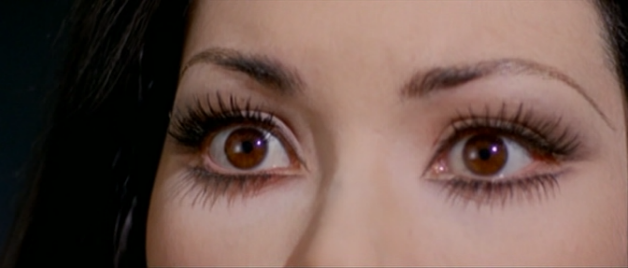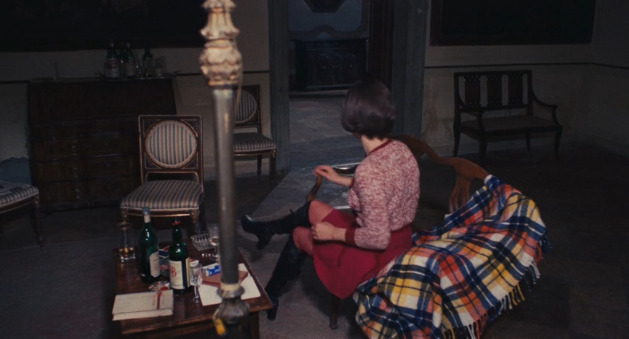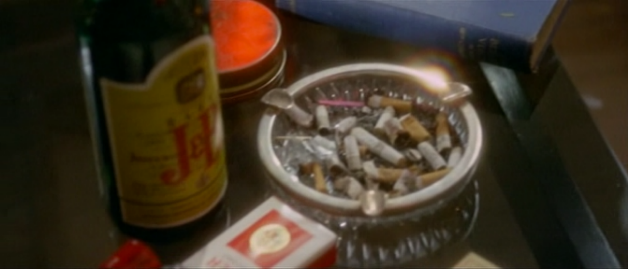The Lovers and the Despot (2016) - Canaan, Adam

Truth is stranger than fiction. In 1978, famous South Korean director Shin Sang-ok and his ex-wife, actress Choi Eun-hee were kidnapped in Hong Kong by North Korean agents under order of Kim Jung-il, the future leader of North Korea. While they were held as captives, they made 7 movies in the hermit kingdom, until they made a daring escape in 1986 to Vienna. This bizarre and fantastic experiences that Shin and Choi went through reads like a crazy combination of a high-flying political thriller and a lurid tale from the dark underbelly of the movie business. And it's totally ripe for a movie adaptation that could easily be much more fascinating and entertaining than Ben Affleck's Argo.
Two British filmmakers, Robert Canaan and Ross Adam, have a go at it in documentary form. Their approach here is pretty straight forward, using tons of archival footage, movie clips from Shin's filmography, tastefully staged reenactments shot in the style of grainy super-8, and interviews with the full participation of survivors surrounding the story.
In the center of it all is director Shin. Once described as the 'Prince of the Korean cinema', Shin had a string of successes in the 50s and 60s with titles like A Flower in Hell, The Prince Yeonsan and Eunuch. Choi, his starlet, couldn't help but fall in love with the dashing movie director on set. They got married and had two children together. But because he was too much of an artist and not enough a realist and had no head for business, he fell into hard times after a couple of flops. Debtors sent gangsters to his office and house, ready to break his legs.
It was President Park Jung-hee (father of current South Korean President Park Gun-hae)'s strict miltary dictator regime which censored his films and eventually shut his film company down in the 70s. Choi and Shin split up when she found out that Shin had a secret family with a younger woman. He hit rock bottom. After his ex-wife's abduction, he went looking for her in Hong Kong but also disappeared under mysterious circumstances. Was he also kidnapped or did he willingly defect? The film only speculates, but chooses not to elaborate further. And Shin, who died of complications after a liver transplant in 2006, isn't here to defend himself.
On camera, Choi, now 89, comes across as an earnest, emotional person when remembering her harrowing (but also at times humorous) experience. She recounts her abduction clearly- She was chloroformed and taken by boat to the North. When she landed on the North Korean shore, she was welcomed by none other than the Kim Jung-il. He treated her like a VIP, all the while she was fearing for her life. Her preconceived notion of Kim, the heir apparent to the most feared regime in the world, was somewhat dulled by his self-degrading humor- "Are you surprised by my height? As short as a midget's turd, eh?" (He was 5'3" reportedly)
After 5 years of captivity and re-educationing, Shin and Choi were finally reunited. In an audiotape, we hear Kim Jung-il admitting the abduction of the two and mistreatment of Shin as all 'but-a-big-misunderstanding'. Shin tells her his several escape attempts and imprisonment. Soon they start planning an escape. But in the mean time, with unlimited support and resources provided by Kim, Shin excels as a movie director, resulting in 7 feature films for their captors.
The film touches upon many intriguing facts but none more so than a glimpse into the cult of Kim Jung-il. It is widely known that he was a movie buff- he was in charge of Ministry of Culture before he became the leader, overseeing every cinematic output of the communist country. Deeply unsatisfied by the lack of talents and typical lackluster sob stories the country's film industry was producing, he had ordered to kidnap South Korea's top talents - Shin and his muse Choi.
Through the secret audiotape that Choi recorded, we hear Kim's giddy, accommodating voice that doesn't really go with the image of the secretive, all powerful dictator. When Choi and Shin sought an asylum in the US, those tapes were valuable to the CIA. It was the first time any Westerners heard the voice of Kim.
The Lovers and the Despot is filled to the brim with amusing, entertaining anecdotes. But it could've been even better, considering how fantastic its subjects are. With all that great intrigue related to the abductions, one could easily make several films out of it. The life story of Shin would make a fascinating biopic alone, for instance.
I wish the filmmakers asked Choi, Shin's lifelong partner who went through those troublesome, fantastic years with him, some pertinent questions regarding the real motives of his being in North Korea instead of softball questions. Yes, Kim Jung-il's statement on tape might prove that he was also abducted, but South Korean intelligence didn't buy it and Shin couldn't come back to South Korea until the 90s. It would have made a fantastic love story if Shin willingly went to North Korea to find his estranged but missing ex-wife and remarry her with Kim Jung-il's blessing.
The Lovers and the Despot opens in Theaters in NY, LA, DC, Boston & Philadelphia and On Demand on Friday, September 23.




















